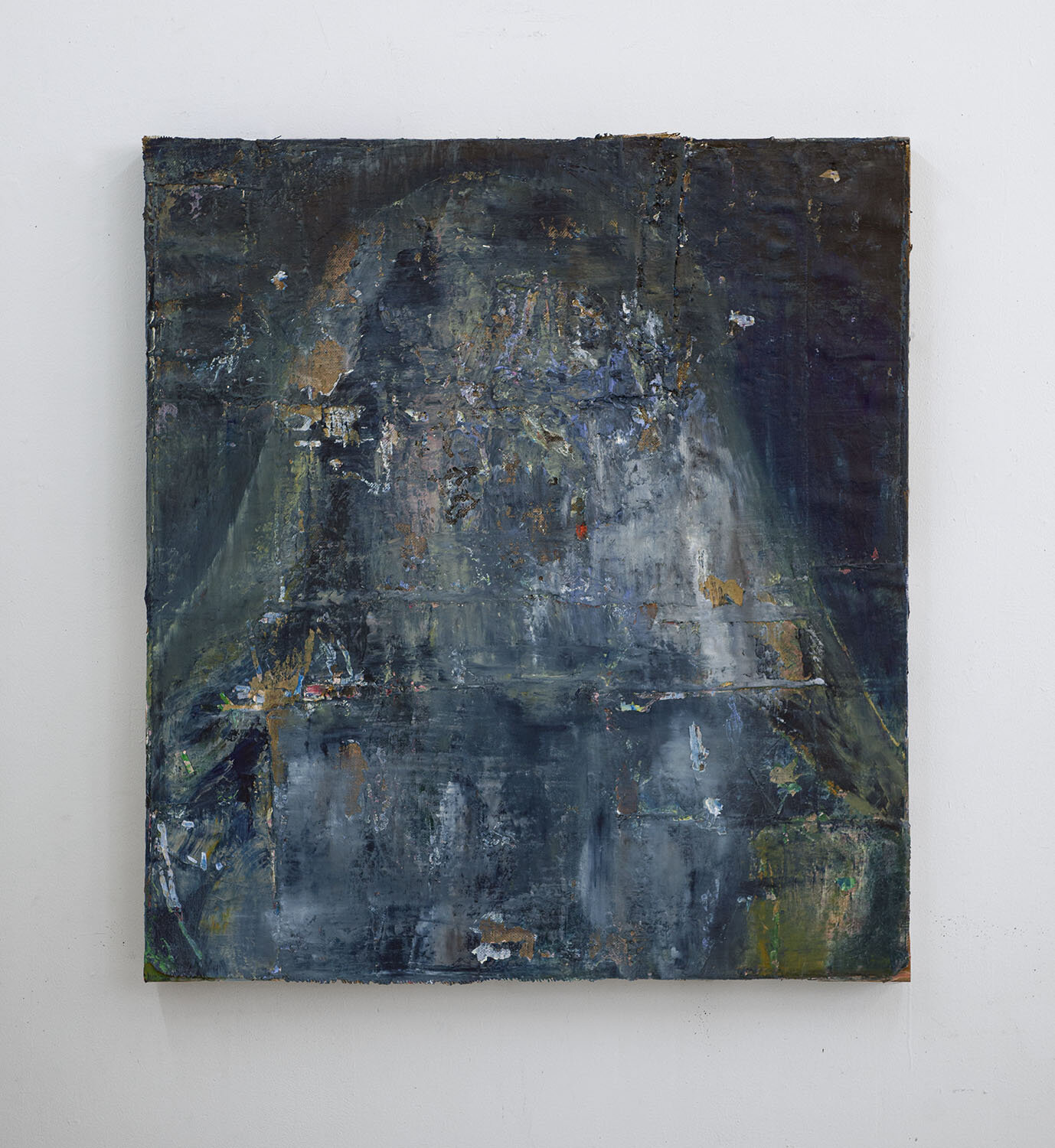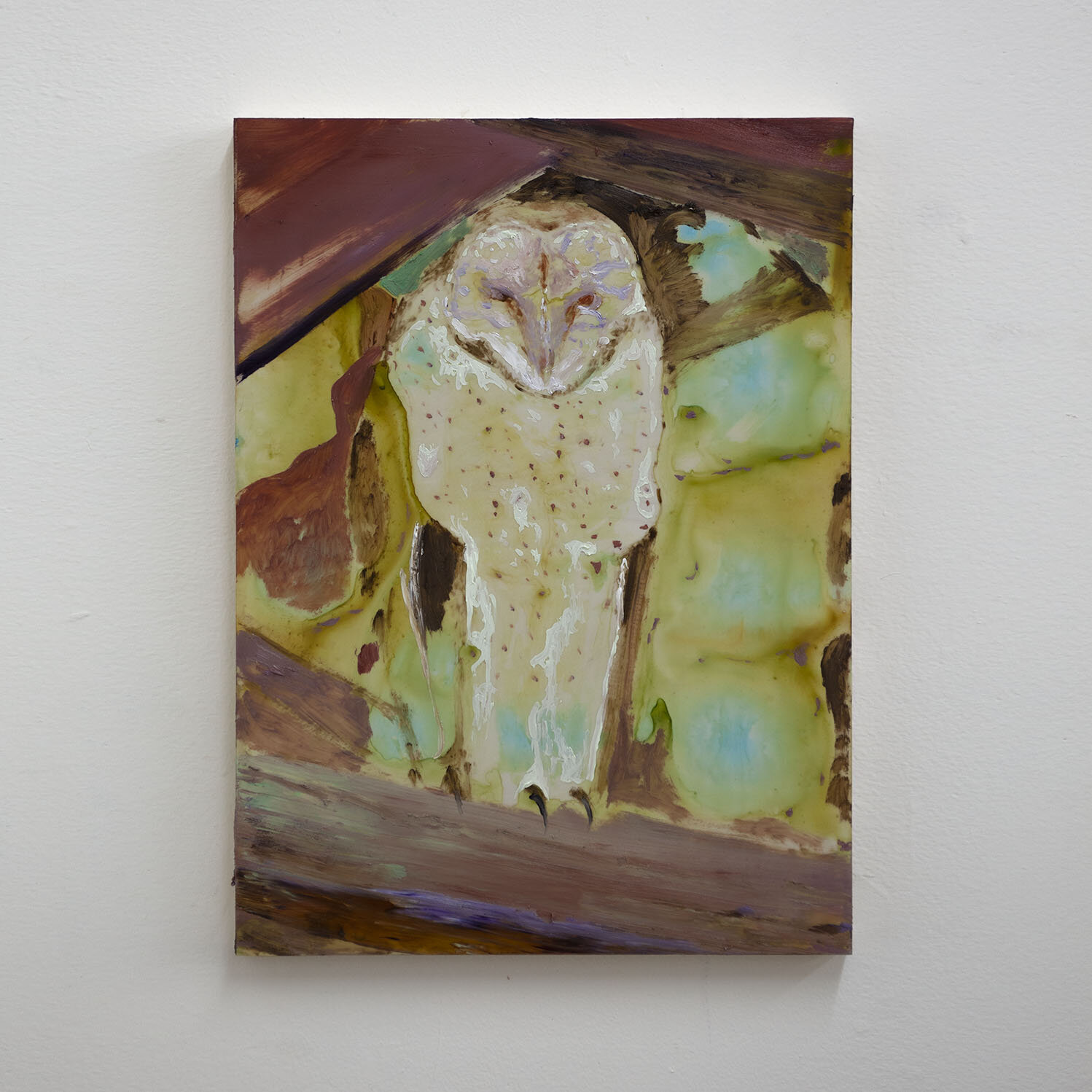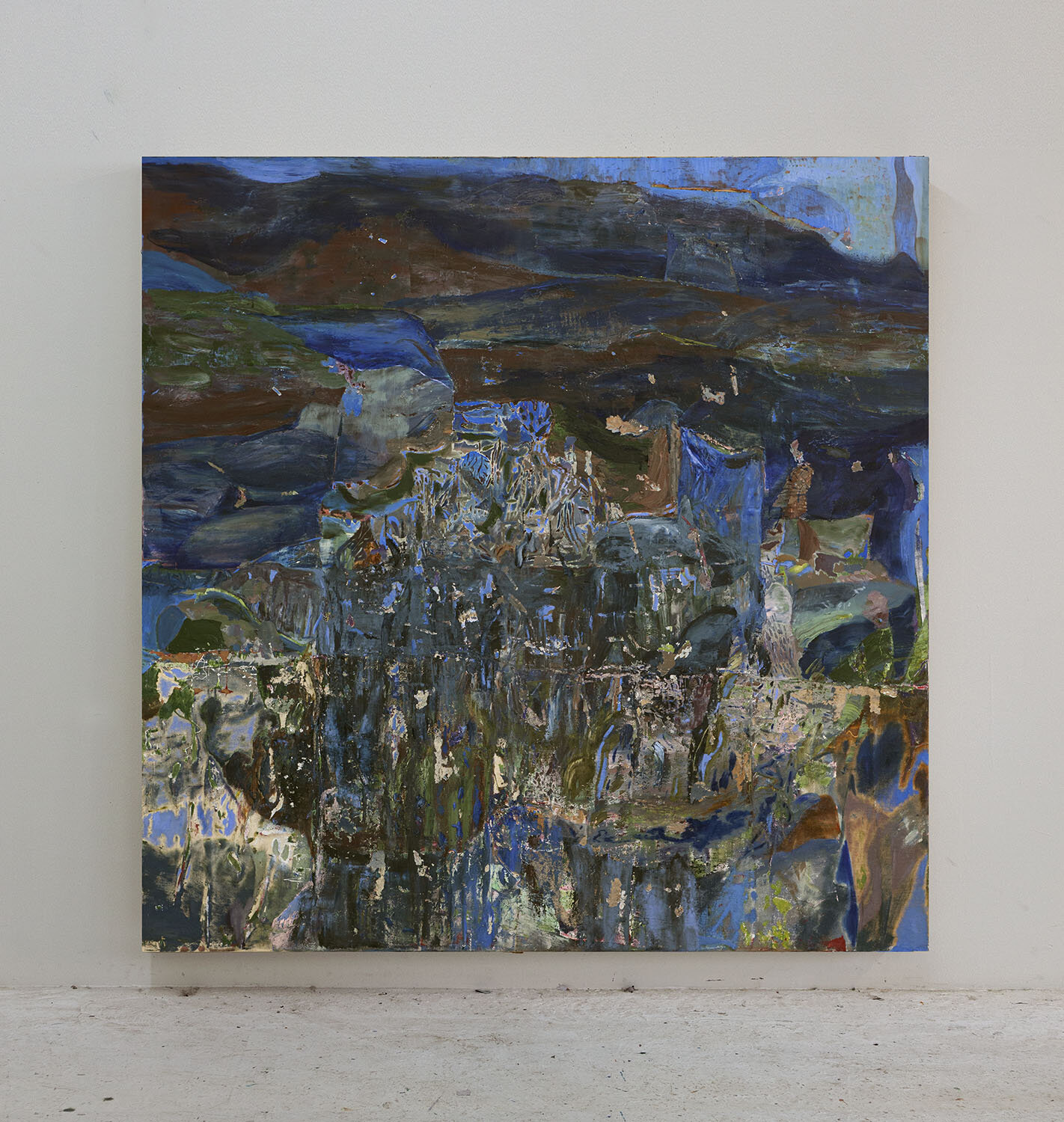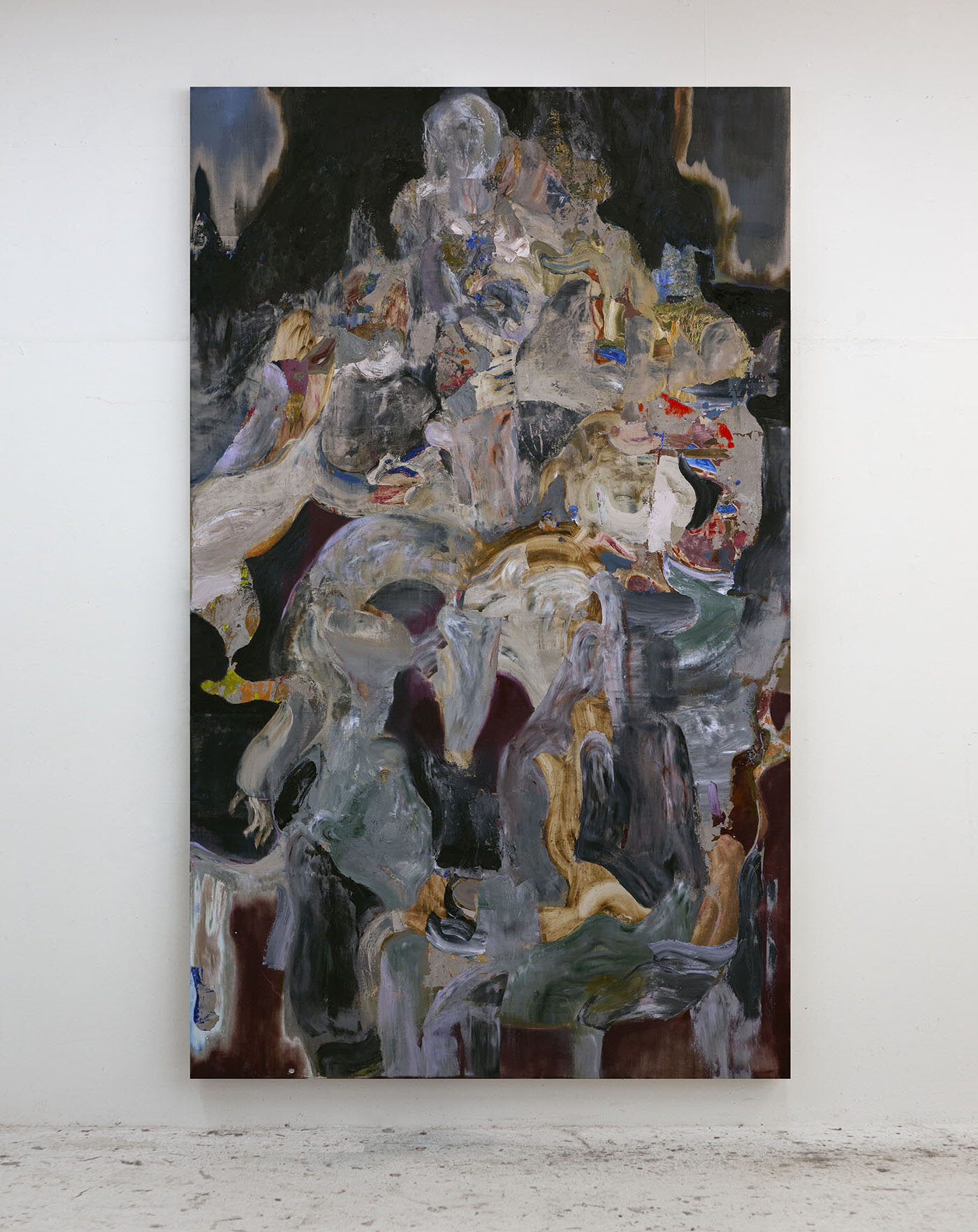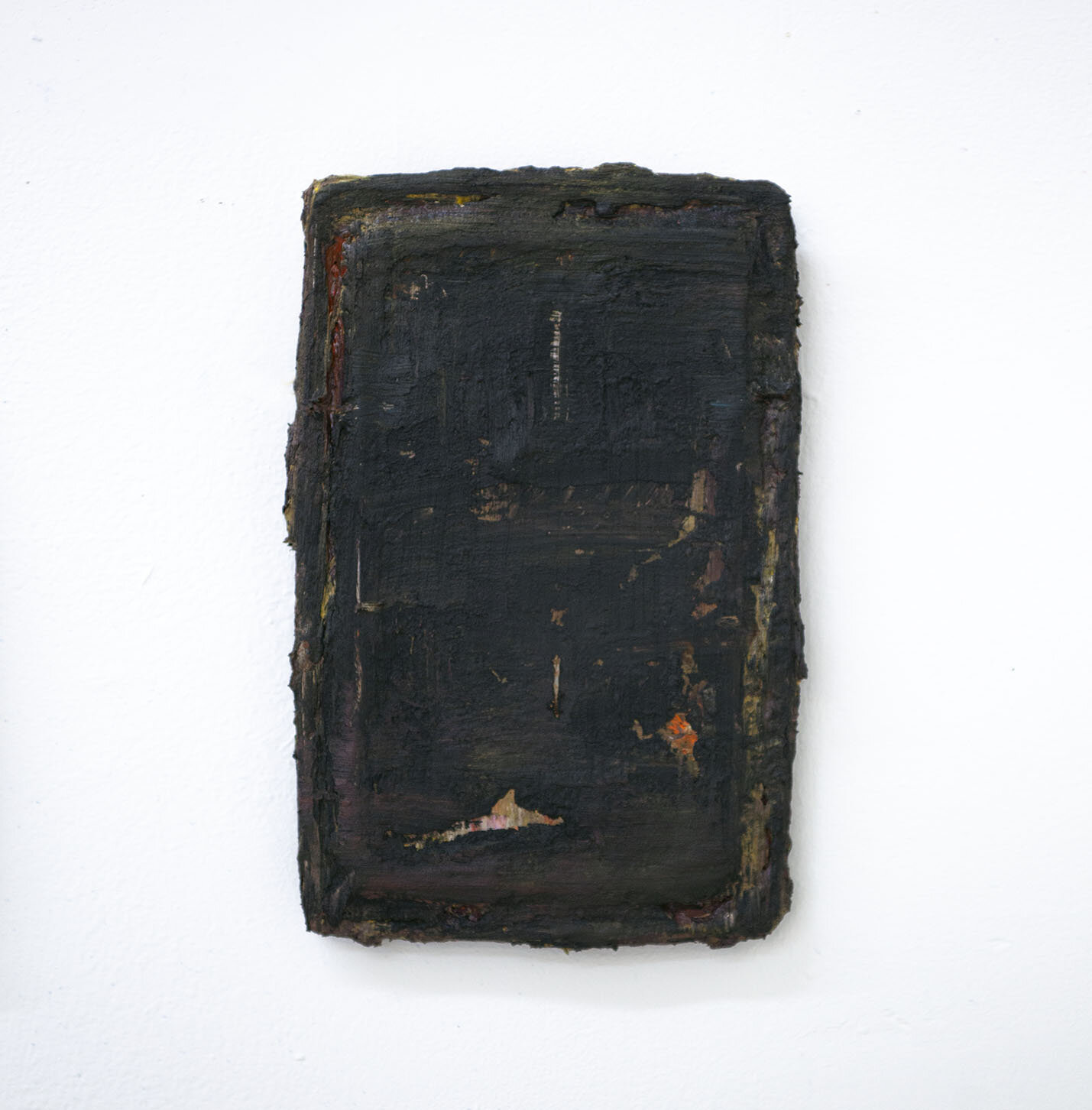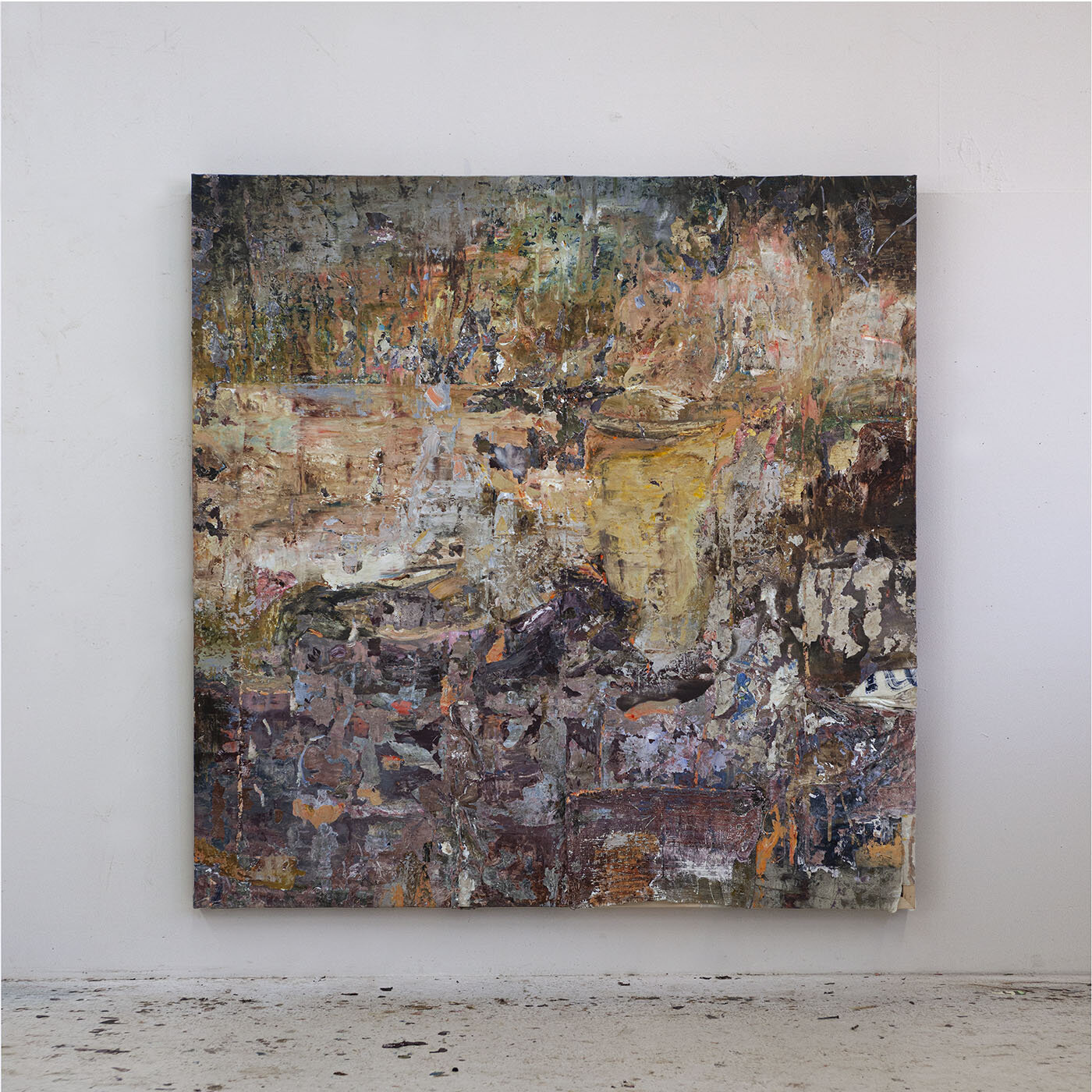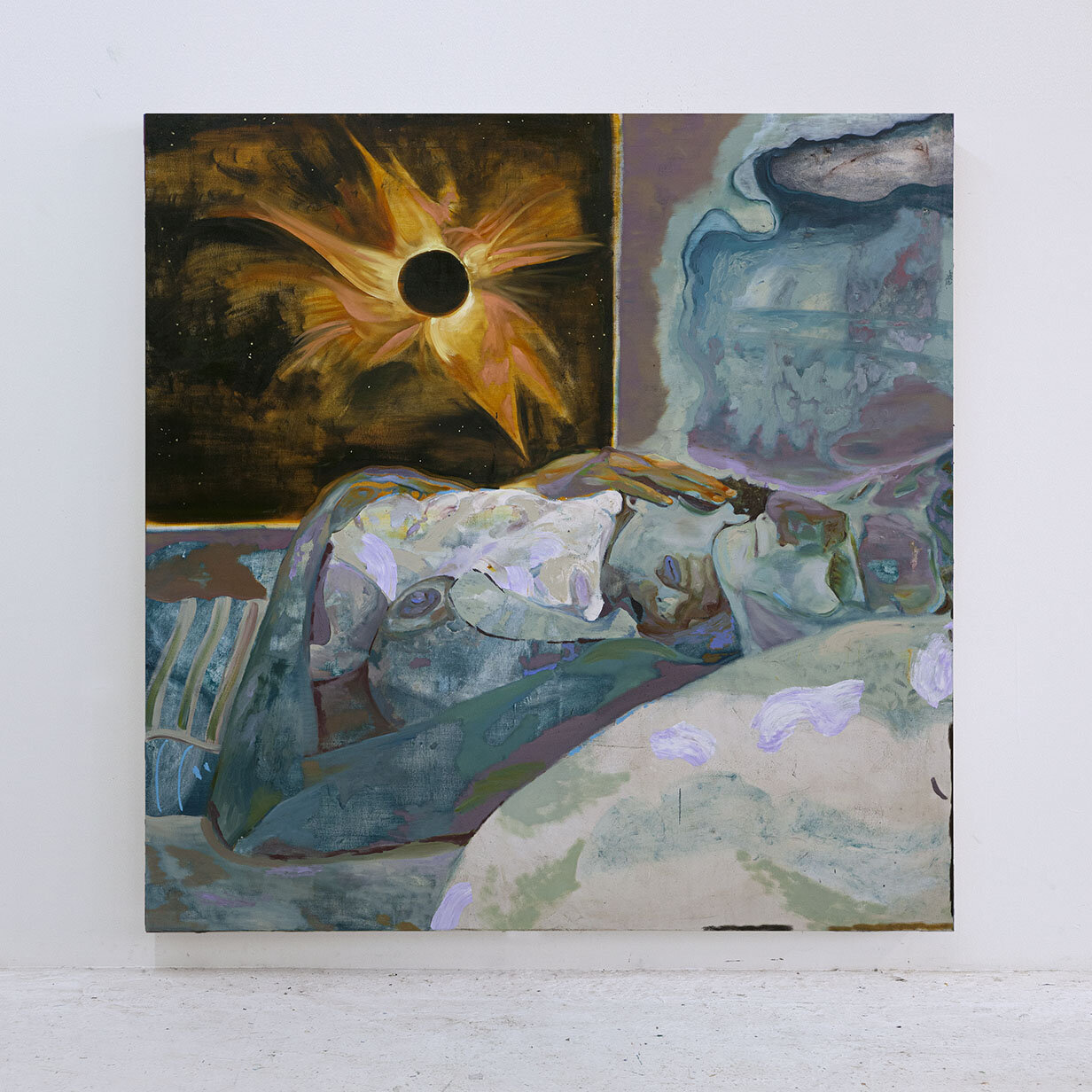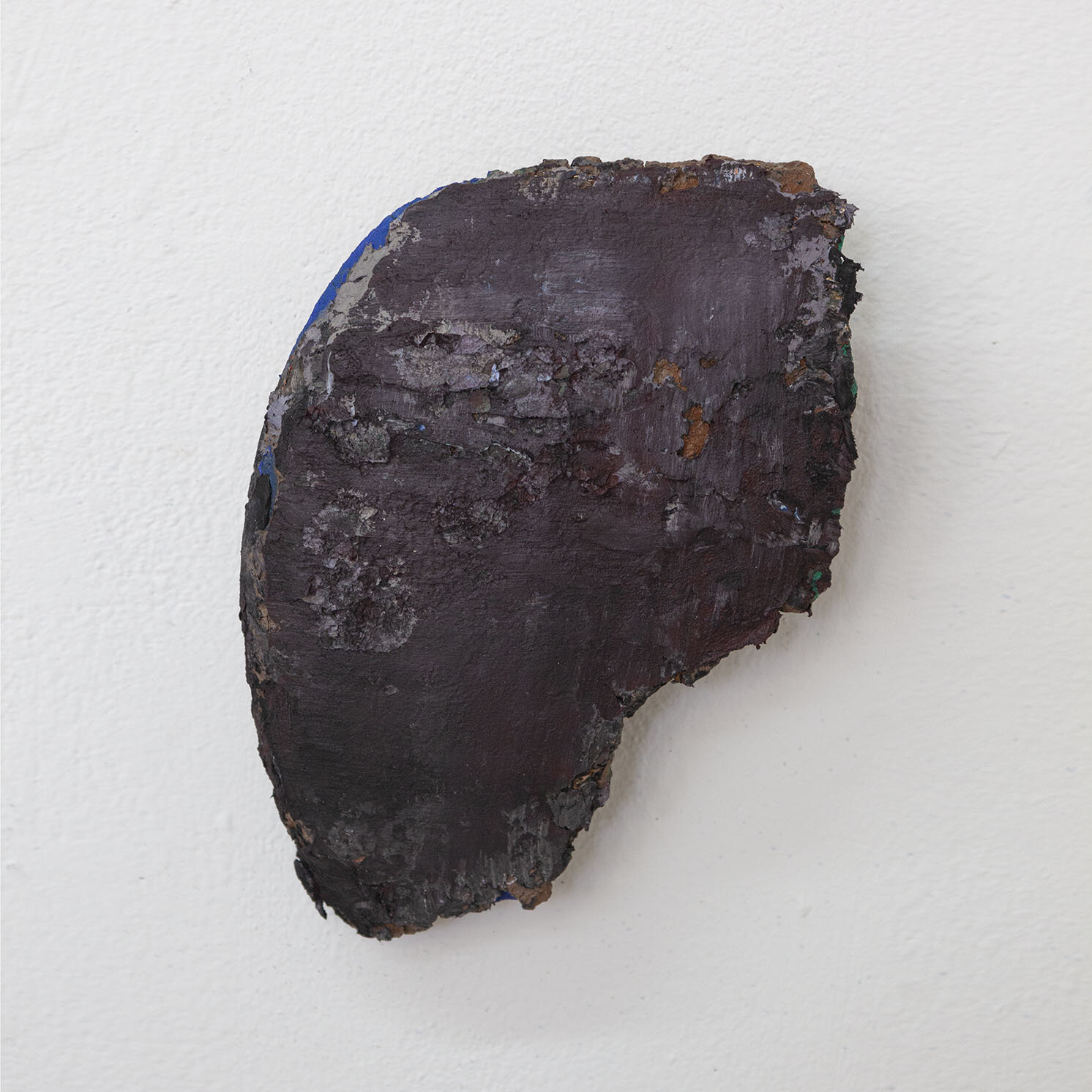Joshua Hagler
Joshua Hagler lived and worked in San Francisco and then Los Angeles for fifteen years before moving to Roswell, New Mexico in 2018 as a grant recipient of the year-long Roswell Artist in Residence Program. He and his wife, the artist Maja Ruznic, have since made New Mexico home and have recently welcomed their first child, a daughter, into the world. Hagler was born at Mountain Home Air Force Base in Idaho in 1979 and is a first-generation college graduate with a visual communications degree from the University of Arizona in Tucson. Self-directed research and travel has underpinned Hagler’s career and is essential to how the artist integrates creative influences with his life experience.
2018 saw two museum shows at the Brand Library and Art Center in Los Angeles and the Roswell Museum and Art Center in New Mexico entitled “The River Lethe” and “Love Letters to the Poorly Regarded” respectively. 2021 marks two solo exhibitions for Hagler with “Drawing in the Dark” at Cris Worley in Dallas and “The Living Circle Us” at Unit London, curated by David Anfam. He has exhibited paintings, sculpture, video, and animation in galleries and museums in North and South America, Europe, and Australia including a long list of solo exhibitions. Reviews and features about the work, as well as his own poems and essays, have appeared in a variety of publications and media outlets in the U.S. and other parts of the world.
His first monograph is currently underway.
INSTAGRAM: @haglerjosh
[OSTRICH] HI JOSHUA, HOW’RE YOU DOING TODAY?
[JOSHUA HAGLER] Great.
WHERE ABOUT’S ARE YOU ANSWERING THESE QUESTIONS?
I live in New Mexico.
HOW LONG HAVE YOU BEEN AN ARTIST? WHAT AGE DID YOU KNOW THIS WAS WHAT YOU WANTED TO DO?
I was five when I got excited about telling stories with pictures.
IF YOU COULD HAVE A CONVERSATION WITH ANYONE DEAD OR ALIVE WHO WOULD IT BE?
The earliest humans, artists in particular.
CAN YOU TELL US WHAT YOU’RE WORKING ON AT THE MOMENT? OR IS IT A SECRET
I’m trying very hard to finish up my solo show at Unit London opening in September. Then we move up to the northern part of the state and begin building our new studios.
YOU TALK ABOUT HOW YOUR WORK EXPLORES RELIGIOUS FUNDAMENTALISM. THIS MIGHT BE TOO PERSONAL A QUESTIONS BUT, ARE YOU YOURSELF RELIGIOUS?
That was true fifteen years ago. I grew up religious and was using my art to be critical of Christianity in America at the time because I believed the problems I found there (e.g. the use of shame to gain leverage and control) to be specific to that culture. But that turned out not really to be true, and painting, I believe, is not the best medium for polemics. It took another decade to mature and understand the issue to be more vastly more complicated and ubiquitous to groups of all kinds. The left and right in America mirror each other in ways we often can’t or aren’t willing to acknowledge. Rene Girard’s mimetic theory demonstrates the most original moral imagination I can think of to describe what I mean. My exhibition “Chimera” at Unit London in 2019 was the first time I tried to put some of that thinking to work in painting. But the truth is, it’s still impossible to communicate that way in painting. Either you can narrate something too obvious to merit the space it takes up or you can let the work develop into something more mysterious. I’m not religious in terms of what the question is asking. But I think if you take a close look at the many components of what makes a person religious, one inevitably finds religiosity in oneself. I don’t think of religion as good or bad, just a natural human byproduct of trying to understand who we are and where we come from. What kind of orthodoxy springs from that is what could be called good or bad, I suppose.
WHAT WAS IT THAT MADE YOU WANT TO EXPLORE THESE TOPICS?
I suppose I felt I was in a unique position in San Francisco in those days to make work stemming from my background, which seemed different from the formative experiences of most of my artist peers. In those days, I was eager to be included and to belong to something new and different from my old church groups. My root motivation, however, probably had as much to do with enacting some kind of misguided revenge fantasy against my father. But what I learned in all of this is that you shouldn’t make work to try to belong to something, especially because your assumptions about the thing you want to belong to are probably wrong, which is what I discovered. I was just as often excluded or cast aside because it was believed that I was a Christian artist. So I learned that just as the religious right discriminates so too does the so-called secular left. There are few independent thinkers willing to buck trends within groups and hypocrisy is, I believe, endemic everywhere.
THE FIGURES IN YOUR PAINTINGS ARE OFTEN DISTORTED OR EVEN COMPLETELY ABSTRACT.
WHAT IS IT THAT YOU ARE TRYING TO COMMUNICATE BY DOING THIS?
It’s just the result of the process. I’m not really trying to distort anything because there’s no ideal form I’m beginning from. I’m just trying to uncover the surface, to see what’s beneath it. You could say I’m waiting for the moment of disclosure. As for what it communicates to others, I suppose that’s between them and the work.
EACH ONE OF YOUR WORKS ARE COMPLETELY UNIQUE. HOW DO YOU KNOW WHEN A PIECE IS FINISHED?
That’s a great question. I could spend the length of the interview addressing just this, and it would be a worthwhile exercise I think. I alluded to it above with regard to the moment of disclosure. Your question is, in essence, how do you know when that disclosure has occurred? But I suppose if I could describe it methodically, it wouldn’t be a real disclosure, or, at least, it wouldn’t feel that way to me. You know how when you see a work of art or read a poem or something like that, if it’s good, and if you’re ready for it, you feel recognized in it? I would say that the disclosure I’m speaking of is this sense of mutual recognition, that you recognize something beyond or beneath your own language. But what does that look like on the canvas, right? I can only say that I’m always hoping that the reality of the physical object will, at some point in the process, subsume the abstraction of imagery. It doesn’t mean that the imagery in the painting is necessarily destined to disappear completely into the object, but the image somehow gets to a place where it is only and specifically itself as opposed to a substitute that functions primarily symbolically. Somehow I want to forget that it’s a painting, or, at least, that I painted it.
WHAT IS THE LIFECYCLE TO ONE OF YOUR WORKS? DO YOU SEE WHAT YOU WANT TO CREATE IN YOUR HEAD BEFORE HAND OR IS IT MORE OF AN INTUITIVE EMOTIONAL PROCESS?
If I could see it in my head in advance, it would defeat the purpose of making a painting. Every painting is a collaboration. You want to be shocked by the dinner guest who arrives to the table. You want to see something you’ve never seen before. Thought and action ought to occur simultaneously for a painter. That’s not possible at every moment, but it’s required at some point in every painting or it’s just fashion and product.
YOU TALK ABOUT WALKING AT DUSK WHEN THERE IS LITTLE LIGHT. READING YOUR ESSAY, ‘DRAWING IN THE DARK’, I TOO FELT THIS DESPERATION TO CAPTURE THE SCENE IN FRONT OF YOU. SQUINTING AND SEARCHING THE ROOM I WAS IN AS WELL. THROUGH LIMITING ONE OF YOUR MAIN SENSES DO YOU THINK YOU ACTUALLY ‘SEE’ MORE AND CAN THEN CREATE ONE OF YOUR OWN PAINTINGS FROM THIS?
I understand what you mean by this question, that darkness can be itself a medium for vision. Obviously, in the literal sense I can’t see more, but I can be more present when the possibility of capturing likeness is hopeless. I’m “in” it rather than “across” from it. Proceeding this way seems to help in luring the dinner guest to the table. Over the years I’ve imposed more and more obstructions and constraints in my process. The less I can control, the more likely it is the dinner guest shows up.
I HAVE TO SAY THAT YOUR WRITE INCREDIBLY BEAUTIFULLY. I AM COMPLETELY TRANSPORTED TO THE EXACT SCENE WHEN YOU’RE DESCRIBING IT. HOW LONG COULD IT TAKE YOU TO FINISH ONE OF YOUR PAINTINGS?
I think I avoid keeping track of time when I paint as a defense measure. If, over the years, I had ever accounted for time, expenses, etc. I would have certainly given up. I can only say that there is little difference in the time required between large and small work. That’s why medium-sized paintings seem so dumb to me most of the time. Who wants to spend weeks on a 4 x 5 footer when you could have spent the same amount of time on a 10 x 15 footer? If I’m going to go small, I’d prefer to go really really small. More power, typically, in 10 x 8 inches than 4 x 5 feet. In fact, the smallest work takes the longest time because I make them in short bursts with leftover paint over a long period. Months, typically.
BY BEING AN ARTIST YOU ARE CREATING, AND LOTS OF THE TITLES ARE BASED AROUND CREATION. HOWEVER, INEVITABLY THROUGH CREATION, ALSO COMES DEATH. WHAT ARE YOUR FEELINGS TOWARDS DEATH AS A SUBJECT AND AN IDEA?
I don’t really want to deal with smaller stakes than life itself. I’d get bored otherwise. I’m not obsessed with death as some kind of macabre fetish; I simply think that it has to be acknowledged if you really want to make something beautiful. I’m someone who is very much aware that he is dying. It’s good to remember that every day. My life empties out as my work and my daughter grow. I’m less concerned about the “spirit of the times” than I am the “spirit of the depths,” to put it in Jungian terms. Time isn’t what we think it is. In the blink of an eye, we’re forgotten. Our lives almost never happened. Chances are, if we let this sink in, then the work will have been worthwhile, will have been made from a place of awe and compassion. We will be vessels for some kind of strange otherworldly song. The consciousness we come into is passed on in what we leave behind.
FROM READING ABOUT AND LOOKING AT YOUR WORKS MEMORY ALSO PLAYS A HUGE ROLE IN YOUR PROCESS. IT SEEMS LIKE YOU HAVE A COMPLEX RELATIONSHIP WITH MEMORY. OR IS IT THAT YOU ARE FASCINATED BY IT AND THE MANY LAYERS WE REMEMBER THINGS?
Well, memory is weird. The more you dwell in it, the more you change it. So, in all probability, the memories we’re most attached to, that are most central to our sense of identity, are also the most distorted. I’ve mentioned a few times that the loss of my brother as a kid had a lot to do with my sense of purpose as an artist. But what would be more accurate to say, probably, is that this conspicuous absence of memory where it seems like I ought to have more, is what i’m really responding to. The lack, the absence, the erasure. This is why I’m obsessed with the Greek ideas of Lethe and Aletheia (my daughter’s middle name).
THE SCALE OF MANY OF YOUR WORKS ARE PRETTY LARGE. ARE YOU WANTING TO OVERWHELM THE VIEWER AND FEEL BOMBARDED OR IS IT TO INVITE THEM IN AND ALLOW THEM TO EXPLORE?
I really don’t think about a viewer, unless you count my wife. I personally want to be overwhelmed, confronted. At other times, though, I want to be pulled close, to peer in. I make a lot more small work than I do big. But the big work seems to be more memorable I guess, which is why folks seem to associate me with the large scale.
YOU TALK ABOUT YOUR WORK MUCH LIKE A FORM OF RITUAL IN RELIGION. WOULD YOU SAY YOU ARE RITUALISTIC IN YOUR APPROACH?
I don’t think it would be wrong to say that. I do, however, think the word “ritual” is overused. To my mind, the idea is about performing a rite in such a way that calls the sacred forward, which if performed often enough as to become quotidian, feels empty and imitative to me. If you talk too much about ritual, it’s the ontological equivalent of taking a selfie while doing yoga. I want to be as honest as I can in responding to this question.
I engage in certain procedures before I make work, namely that I meditate for about an hour. I’ve only been doing this for about a year. You could call that a ritual and it wouldn’t be wrong, I suppose. I also make a lot of rules when I make work. I do this so that the right conditions are set to make something in which I give up control along the way, to make what feel like genuine discoveries. Another word for “rules,” or more accurately, “principles,” is “dogma.” To impose a dogma is to narrow the variables in terms of actions I could take, so that I have a path forward. I want to equate these actions to my serious-minded intentions, and sometimes, if I’m not careful, I begin talking about these serious-minded intentions as if they are alive and working at every stage in the process of making a painting. But the truth is, that’s not so.
Equally important to the dogma is total irreverence. My wife Maja Ruznic likes to talk about the “drunken hand.” I want to say my rules and rituals are in service to my intention toward an other (a human, living or dead, an animal, a place, a time) but there is another kind of knowing that the painter encounters, which has to do with play. The play part of the process is perhaps, ironically, the more honest and important part because it’s not obsessed with purity. It’s probably the more central part to how the whole thing works. You need to know that while the ritual gets you going, there is really nothing very important about it. Inside any one painter is an iconoclast controversy taking shape. The monk and the trickster live together under the same roof. You need them both.
IF YOU COULD GIVE SOMEONE ONE PIECE OF ADVICE AT THE BEGINNING OF THEIR CAREER, WHAT WOULD YOU SAY TO THEM?
I’ve thought about this question a lot, and have received it a number of times in the past. My mind goes all over the place. I could write pages. But I think what I’m realizing is that I don’t want to give out blanket advice to someone I don’t know. This is because there are so many types of artists and paths an artist could take. It’s better to have a private conversation, to get to know someone before doling out advice. But I will say that life itself, and not career, ought to be your bottom line. It’s easy to become miserable and insecure in the art world. A lot of people are. I spent most of my adult life letting it make me miserable. My advice is don’t do what I did.
IS THERE A PIECE OF WORK OR MOMENT FROM YOUR CAREER SO FAR THAT YOU ARE MOST PROUD OF?
You know, I feel enormous gratitude that something wonderful seemed to take shape when I moved to New Mexico in late 2017 and has continued to reveal and disclose itself ever since. If I could allow myself to feel pride in anything it would be especially in the work I’ve made over the past year because of how exhausting life and work has been with a new baby. Now that I think about it, Maja and I do share a lot of pride with regard to this past year. We’ve done everything on our own: raising our kid, overcoming health crises, making our work, buying a house, getting plans together to build our new studios, following through on our commitments to exhibit and so on. So yeah, I am proud of us, of what we managed to do over the past year in spite of everything.
IS THERE SOMEBODY/FRIEND OR ARTIST THAT INSPIRES YOU IN PARTICULAR?
My wife Maja Ruznic is the artist who inspires me more than anyone. She has the only eye I trust.
WHICH CITY BEST SUITS THE SOUL OF YOUR ARTWORKS?
I prefer open landscapes and ghost towns, provincial towns and villages to the big international cities. New Mexico, where I live, has been the best place for the work in all of these years. I need to be where it’s possible to see far into the distance and where it’s common to encounter wildlife.
WHAT IS USUALLY PLAYING WHEN YOU’RE WORKING?
Arvo P rt, Christian Scott aTunde Adjuah, Nick Cave, Leonard Cohen, Laurie Anderson. Podcasts such as OnBeing, This Jungian Life, Throughline, Poetry Off the Shelf, Mindscape.
WHAT IS YOUR FAVOURITE PAINTING/WORK OF ART YOU HAVE EVER DONE?
I just made a painting called “The Hour,” from drawings of my daughter in the first hour of her life and from the fire-damaged landscape near to where I live. Right now, that’s my favorite.
THANKS SO MUCH FOR YOUR TIME! ANY OTHER PLANS FOR THE REST OF THE DAY? ANY NIGHT WALKS TONIGHT?
Imma drink my wine and stream something stupid. There will be time for night walks again.









